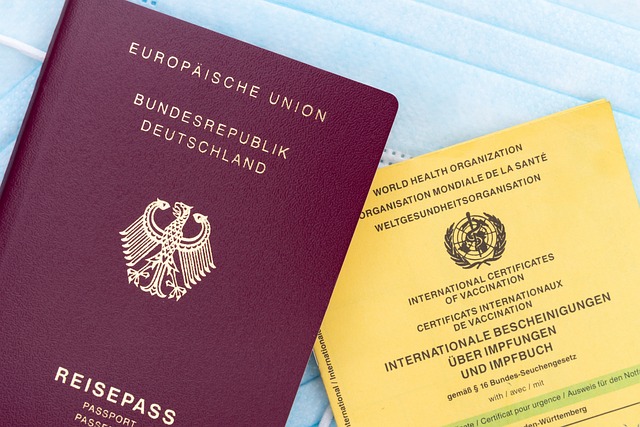Decoding Vehicle Identification Numbers (VIN) reveals critical information about a car's identity, history, and potential issues, helping buyers make informed decisions. The 17-digit global standard ISO 3779 dictates numerical and alphabetical components, enabling access to details like origin and manufacturing plant. This standardization promotes transparency in the automotive market, especially for imported cars where proper VIN verification uncovers discrepancies or hidden issues. Digital innovations transform cities, optimizing infrastructure and transportation while fostering community engagement. Understanding the first few digits of a VIN reveals a car's country of origin, aiding in quality control and regulatory compliance assessments. Manufacturers encode assembly plant information within VINs, with online decoding tools enabling buyers to verify a vehicle's origin and assess its manufacturing history.
The Car Identification Number (VIN), a seemingly arbitrary sequence of 17 digits, is far from random. It serves as a global passport for vehicles, adhering to stringent ISO 3779 standards for consistency. As the world becomes increasingly interconnected with bustling global car markets, prospective buyers in 2024 find VIN decoding essential, especially when importing European or Asian vehicles. This article explores how understanding this intricate code can reveal crucial information about a vehicle’s country of origin, manufacturing plant, and even its history, empowering buyers to make informed decisions and protect their investments.
- Decoding the VIN: More Than Just Numbers
- Global Standards: ISO 3779 and VIN
- Importing Cars: The Need for VIN Decoding
- Unveiling Past Secrets with VIN Search
- Country of Origin: A VIN Storytelling
- Plant Identification: Where Cars Are Made
- Protecting Purchases: VIN's Peace of Mind
Decoding the VIN: More Than Just Numbers

Decoding the VIN involves more than just matching numbers and letters to a pre-determined list. It’s a complex process that unveils a vehicle’s identity, history, and even potential issues. Each digit and character in a 17-digit VIN follows specific standards set by ISO 3779, ensuring global consistency. This code encapsulates crucial information such as the country of origin, manufacturing date, make, model, and even the specific assembly plant where the car was built.
By using online tools or databases, prospective buyers can easily decode these hidden messages. A simple VIN search allows access to a wealth of data, including past owners, service records, accidents, and potential fraud. This transparency empowers car buyers with knowledge, enabling them to make informed decisions and ensuring they purchase a vehicle with a clear and secure history.
Global Standards: ISO 3779 and VIN

The Car Identification Number (VIN), a sequence of 17 digits, serves as a global standard for vehicle recognition, governed by ISO 3779. This international organization sets and maintains protocols ensuring every VIN is structured consistently across all car manufacturing regions. The standardized format allows for easy verification and tracking of individual vehicles worldwide, fostering transparency in the automotive market.
ISO 3779 defines not only the digit composition but also the placement of letters and special characters within the VIN. This meticulous coding enables prospective buyers to gain valuable insights into a vehicle’s history simply by decoding its unique identifier. From the country of origin to the manufacturing plant, every piece of information is encoded, providing a comprehensive snapshot of the car’s past and enhancing the overall buying experience.
Importing Cars: The Need for VIN Decoding

As global car markets thrive with increased imports from Europe and Asia, prospective buyers face a crucial need to verify the authenticity and history of their potential purchases. Imported cars, with their unique characteristics and varying standards, demand a deeper level of scrutiny. This is where VIN decoding becomes an essential tool for buyers in 2024.
A Vehicle Identification Number (VIN) serves as a digital fingerprint for each car, containing vital information encoded within its 17-digit structure. Decoding this code allows buyers to uncover key details such as the country of origin and manufacturing plant, providing insights into the vehicle’s past and ensuring transparency in the purchase process. This practice is especially critical when dealing with imported cars, where discrepancies in documentation or potential hidden issues could go unnoticed without proper VIN verification.
Unveiling Past Secrets with VIN Search

Country of Origin: A VIN Storytelling

Each digit in a Car Identification Number (VIN) holds a specific meaning, offering a window into the vehicle’s story. When it comes to the country of origin, the first two or three digits of the VIN provide crucial clues. For instance, vehicles manufactured in North America often start with ‘1’ or ‘3’, while European cars typically begin with ‘W’ or ‘S’. Asian manufacturers usually assign codes like ‘J’ or ‘4’. This standardization allows prospective buyers to quickly identify where a car was built, which is essential information for understanding quality control and potential export/import regulations.
By decoding these initial digits, buyers can gain insights into the vehicle’s heritage, ensuring they’re making informed decisions. It’s a simple yet powerful tool that bridges the gap between global markets, providing transparency and peace of mind for those in the market to buy a car, especially when dealing with imported vehicles.
Plant Identification: Where Cars Are Made

Each car manufacturer has specific plants where their vehicles are assembled, and this information is cleverly encoded within the VIN. The initial characters of the VIN often indicate the country and sometimes even the exact plant where the car was built. For instance, a VIN starting with ‘W’ typically identifies a vehicle produced in Germany by Volkswagen or Audi plants. Similarly, certain sequences of digits or letters can pinpoint other manufacturing hubs worldwide. This plant identification is crucial for buyers as it allows them to verify the authenticity of the car’s origin and assembly quality.
With the rise of international car trading, having this level of detail in the VIN becomes increasingly valuable. Prospective owners can use online tools to decode this information, providing them with a snapshot of the vehicle’s manufacturing history. This simple step ensures that buyers are making informed decisions, knowing exactly where their future car came from and, by extension, its potential quality and maintenance needs.
Protecting Purchases: VIN's Peace of Mind

In the dynamic global automotive landscape, understanding a Car Identification Number (VIN) is more than just decoding digits; it’s unlocking a vehicle’s history and ensuring a secure purchase. With increasing international car markets, tools for VIN decoding have become essential for buyers in 2024. By adhering to standards like ISO 3779, the 17-digit VIN offers insights into country of origin, manufacturing plant, and even past ownership—all crucial factors in making informed decisions. Embracing these practices empowers car buyers to navigate the complexities of imported vehicles with confidence, ultimately fostering a more transparent and trustworthy automotive industry.



